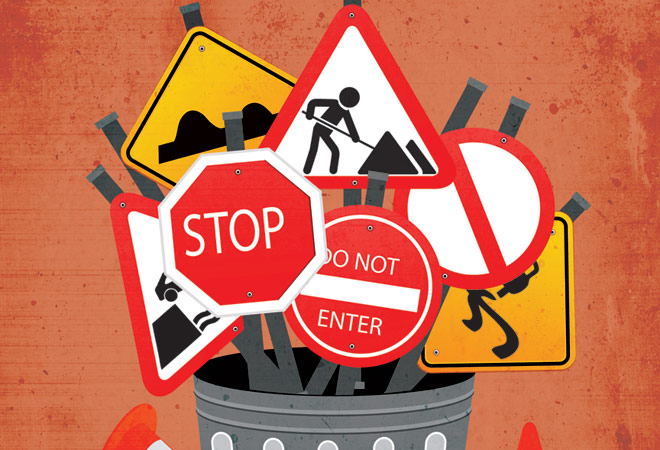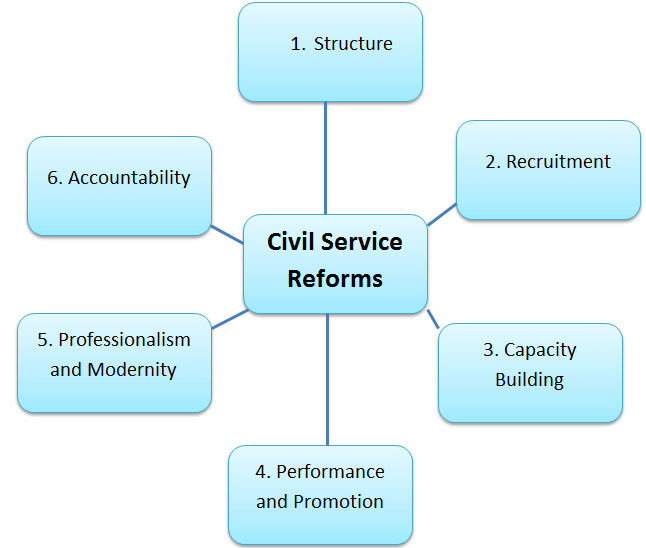 India is a democratic country where power confers with the people. This power is executed through its designate representative, both elected and selected. The civil services by quality of its knowledge, experience and understanding of public affairs support the chosen representatives to device effectual policy and have great responsibility to implement these policies for the welfare of society and Enhancement of nation.
India is a democratic country where power confers with the people. This power is executed through its designate representative, both elected and selected. The civil services by quality of its knowledge, experience and understanding of public affairs support the chosen representatives to device effectual policy and have great responsibility to implement these policies for the welfare of society and Enhancement of nation.However, of late there is huge hue and cry regarding working of bureaucrats. It has drawn criticism from both national and international forum which raises serious questions about its working.
On September 1, Carnegie Endowment for International Peace wrote, “India’s economy has grown rapidly in recent years, but the country’s bureaucratic quality is widely perceived to be either stagnant or in decline”.
A/q World Bank report that captures the quality of a country’s Civil Services. India’s performance is middling. Data from 2014 place India in 45th position, nearly 10 percentage point decline from the country’s position in 1996, when these data were first collected.
Issues pertaining to bureaucratic failures
- There is a colonial legacy of unchallenged authority and propensity to exercise power arbitrarily – leading to corrupt practices.
- As the economy is freed from state controls post 1991, extortionary corruption declines and collusive corruption (b/w politicians and bureaucrats) tends to increase.
- Since Bureaucrats come with a seniority based promotion and a defined retirement age , hence they are least bothered about their performance reviews. Even the Annual Confidential Reports (ACRs) are often managed.
- Most of the bureaucrats approach is to control and govern and not work as a team for development.
- The majority of bureaucrats work for themselves and then, there are egos, differences, grudges and dislike for fellow bureaucrats. So, there is never a team approach in whatever they do and this drags the performance of the government.
- Our bureaucracy is more procedure driven than outcome driven.
Structural underpinnings affecting Civil Servant Performance
In any country, the economy and society are usually ahead of the government, which causes a governance gap to emerge. In India, this gap is wide and growing. The only way to narrow it is by increasing the quality and, yes, the quantity of public officials.
- Except few department , we neither appoint nor promote civil servants based on their performance.
- A/q Seventh Pay Commission, federal government of US has 668 employees per 1,00,000 population while Indian union government employs 139 in comparison. Such work loads have potential to hamper the performance.
- India has one of the lowest ratios of government employees to population in the world. In a World Bank study in the late 1990s, found that less than 1.5 per cent of India’s population was employed in government, which was behind countries such as Malaysia and Sri Lanka (4.5 per cent) and China (around 3 per cent). In fact, government employment ratios in the rich and better governed West are much higher: around 15 per cent in Scandinavian countries and 6-8 per cent in the U.S. and western Europe.
- The shortage of officials is something that runs through the union, state and local government. In the union government alone, Seventh Pay Commission reports, there is overall vacancy of around 18 percent. Rising number of vacancy put constrains on officials to deliver adequate baseline governance.
- So if we are concerned about improving governance, we should be really concerned about how to add strength to machinery of government. When you have only around 130 police personnel and 1.2 judges per 1,00,000 population.

Some reforms as suggested :-
- To strengthen accountability “Carnegie Endowment for International Peace” recommend a system of two intensive reviews at the 14 and 20 year service marks to determine continuance in public service.
- It also suggests a new Civil Service Reform Bill to fix the minimum tenure for senior posts and establish safeguards against arbitrary dismissal.
- Current appraisal system Annual Confidential Reports (ACRs) only take into account an individual’s performance not his department/ministry and overall performance of Government.
- So , first change required is ACR to CPR (Comprehensive Performance Review) which include Individual Performance Review (50% weightage), Department Performance Review (25% weightage) and Government Performance Review (25% weightage). This would help to develop the culture of team work and Collective responsibility.
- Increments, Promotions should be based on CPR. This implementation should be a phased manner, starting with the secretaries, then joint secretaries and then the director level.
- Performance Based Contractual Services It would dispel job security mindset and would urge them to push boundary and prove their worth.
- Post of Private Secretary should be given to a special – Secretary rank officer. As a junior IAS officer plays safe while dealing with his seniors. Hence it impacts the performance of the ministry.
- Lateral Entry It would add professionalism and would draw a more robust talent pool in the Government.
Conclusion :-
Bureaucracy is an important institution endowed with responsibility of service delivery to people of country. It is an indispensable tool for maintaining faith of citizen of the Country in the Constitution and its welfarist ethos. However, any crack in the system can boomerang the entire notion of the ‘nation’.
As our esteemed PM pointed out “We can’t march through the 21st century with the administrative system of 19th century”. The transition is critical and we have no time to loose, and there should be a time bound plan to implement it.